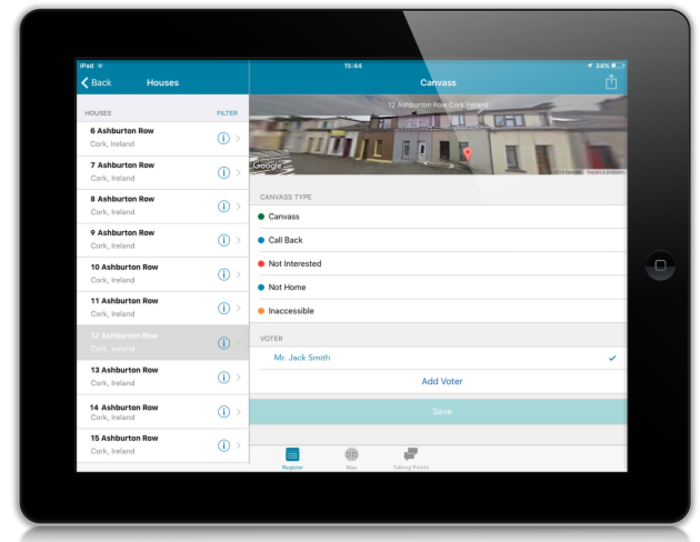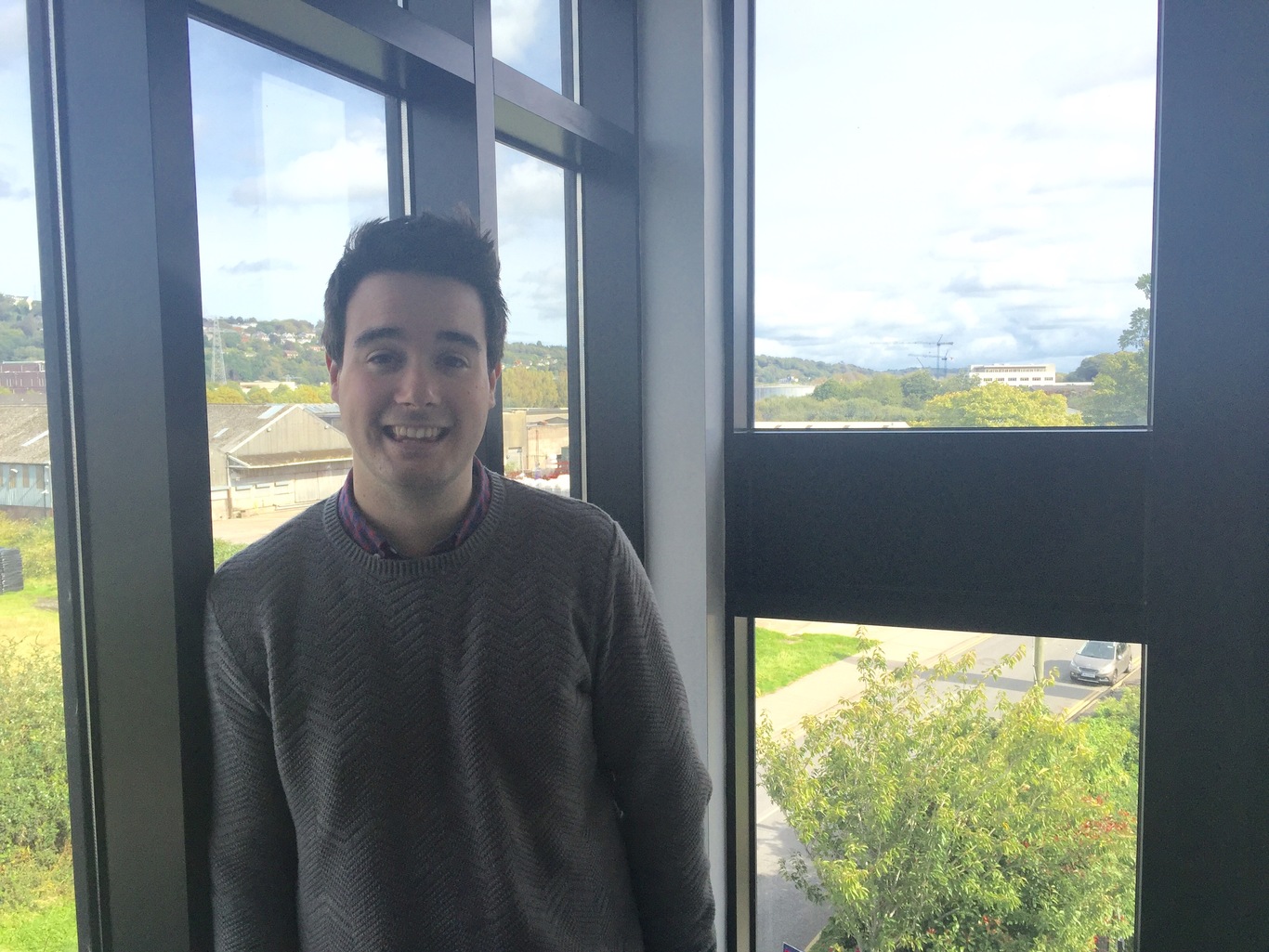'We focused too much in Ireland so we're a year and a half behind where we could have been'
The founder of an app for political canvassers wishes he targeted America sooner.
IN 2011 I was in college studying business information systems and I needed an idea for my final-year project.
I was involved in political societies and did some canvassing through that, so the idea struck me, why don’t we just take all the paper involved with canvassing out of the equation and put it into a mobile app?
So, as my project, I developed a basic version of that app and towards the end of the year I entered a students’ union competition, the cash prize for which was €3,000. I won that and it gave me a bit of validation to keep going with the idea.
I developed the first Android version of the app myself, but it wasn’t ready for commercial purposes. It was a very basic version of what I wanted to create and it was enough to get me into the Ignite incubator programme in UCC and some early funding from the Local Enterprise Office in south Cork.
Getting into that incubator helped me build what today is called Ecanvasser, a campaign management app and our first product. It allows campaigns to upload voters they want to target, which is very useful in the US, because over there you can buy voter files with demographic information and voting history.
Canvassers can also log information in the app, like issues that voters have talked about while canvassing, such as transport or healthcare, and those issues can be assigned to someone in the campaign team to follow up on.

Developing the tech
When I was in the Ignite programme in 2012, I was just testing the market to see if the idea was viable enough. Then by May 2013 we were in a fairly intensive mode of development. I expected it would take a year to develop the app, and we got a beta version out in 2014 for the local elections in Ireland.
The take-up wasn’t that great, to be honest. It was fine, but it wasn’t how much we were hoping for and there were problems with the technology. So we took all we learned and built a second version of the app.
At that stage, we started to get a bit ambitious and pushed into other international markets like the US. The feedback from people over there was that they liked the product, but they couldn’t use it because they had all this data they had spent thousands of dollars on and the software didn’t allow them to upload it.
What we found was we had built a product for the Irish market when the US was where it’s at. It meant we had to re-engineer Ecanvasser to suit the North American market.
That was very frustrating because it meant we had to spend 2015 changing what we had already built. Since then, we have launched the new version of Ecanvasser for the international users and signed up over 500 US-based campaigns and other movements in Canada, the UK, Austria and New Zealand.
Gone to America
I wish we had targeted America sooner. It felt only natural to start out in the Irish market because I knew it well, but Irish political campaigns are just not used to technology.
No other country takes campaigning as seriously as the Americans. The US market is ahead of every other market because it has an industry around political and issue-based campaigning. There are so many political races over there, so it can maintain an entire industry on its own.
I think the lack of tech uptake by Irish political campaigns is down to the fact that in Ireland you don’t really need technology to scale a campaign, but in the US you need tech in order to scale the face-to-face interaction.

When we were starting out, I didn’t think we would have the resources to take on the US. You always hear about companies needing to raise so much money to get into the US market and open a small office and all that.
If we stayed in Ireland, the company wouldn’t be here today and, hypothetically, if we went to America properly in the middle of 2014 and really pushed the product back then, we would be a far bigger company today. I think we’re that year and a half behind where we could have been, which is frustrating.
However, I think the world is catching up with the US, which is good news for us. We’re seeing it in the French presidential election that they are using US political technology, and it has woken up the European parties that wouldn’t do the traditional, personalised campaigning that got Barack Obama elected in 2008 and 2012.
Not announcing funding
So far, I have built up the company by consistently raising small rounds of funding, however the ideal way to build a company would be to do it without the need for any external funding. That’s the best method, in the style of Teamwork in Cork where they bootstrapped it the whole way.
We like to keep it to small amounts of funding so we can hit realistic milestones between each time we get money in. At the moment we are looking for funding and would hope to have it closed by November, but we don’t really like to announce the funding we raise.
It’s not a case that we want to keep it hush, hush, I just don’t see it as news. I wouldn’t pin down the raising money announcements as a failure, but essentially you’re announcing that you weren’t able to get enough customers in or revenue in the door so we had to raise lots of money.
Fair enough if you are raising massive amounts of money that is big news, but in my eyes it’s just a general day-to-day thing that you have to do.
Brendan Finucane is the founder of Vconnecta. This article was written in conversation with Killian Woods as part of a series on business mistakes and what can be learned from them.
If you want to share your opinion, advice or story, email opinion@fora.ie.






